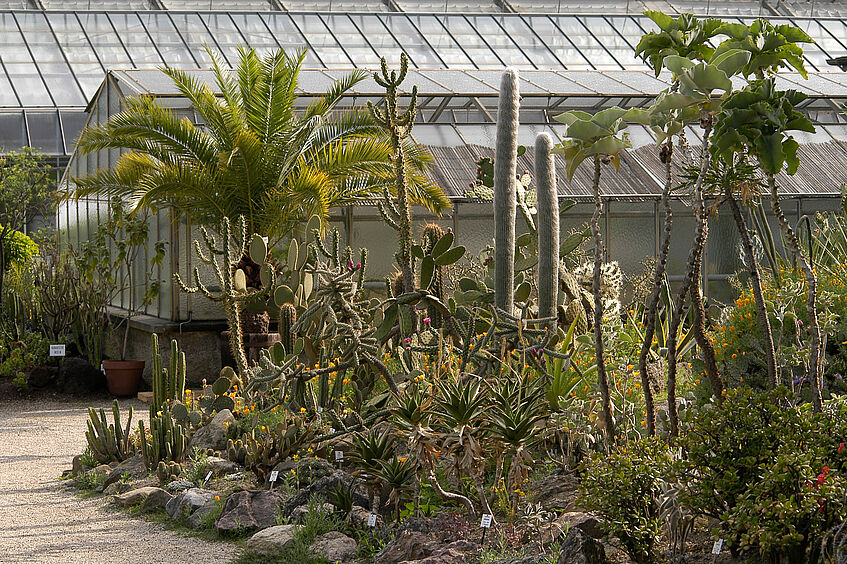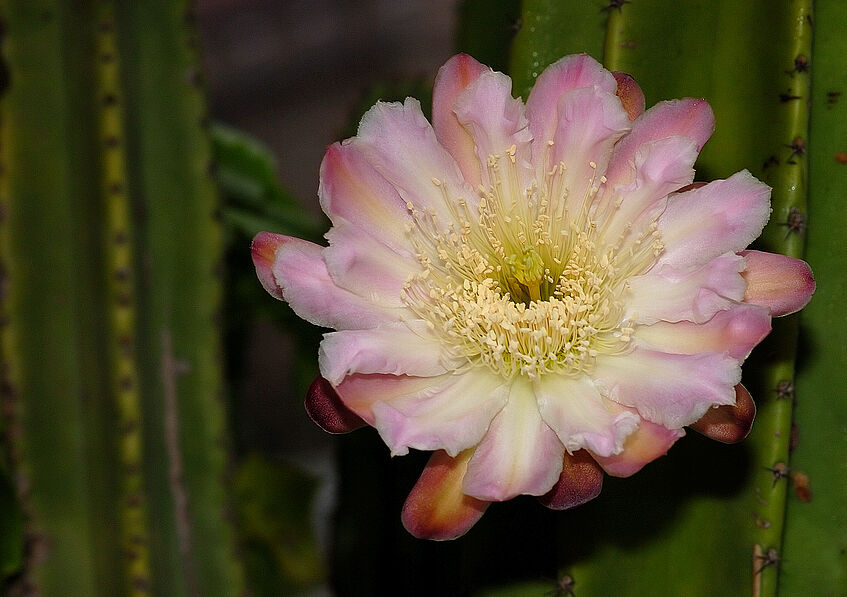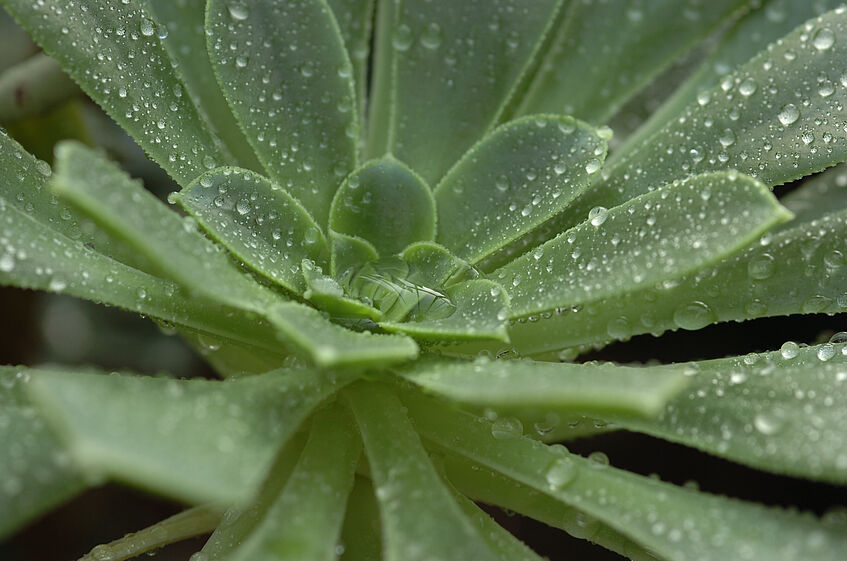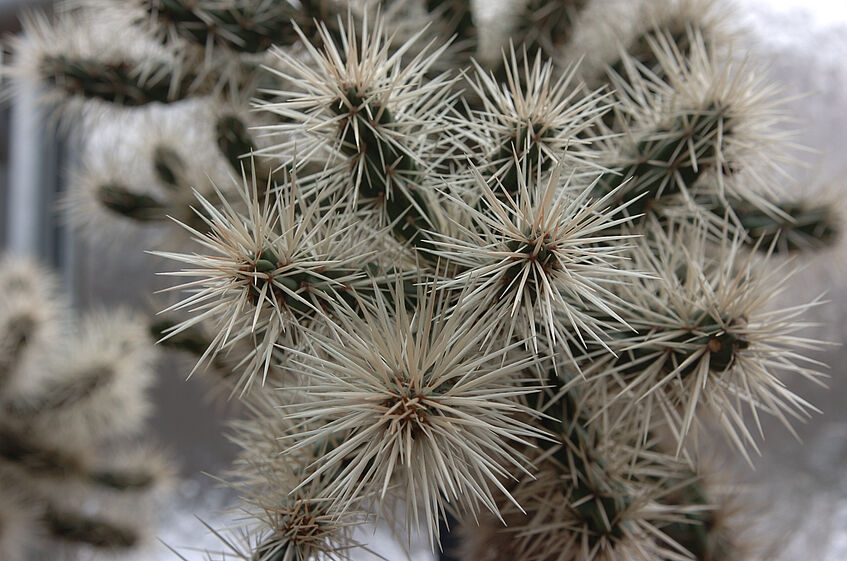Cacti and other succulents

Kakteen- und Sukkulentengruppe © BGUW_R. Hromniak

Cereus x hybridum © BGUW_R. Hromniak

Kakteen- und Sukkulentengruppe © BGUW_R. Hromniak

Kakteen- und Sukkulentengruppe © BGUW_R. Hromniak
The collection of succulents in the Botanical Garden of the University of Vienna consists of about 800 species and 3,700 specimens. It is a classic educational and ornamental collection. Succulents are defined as plants that are able to retain water with the aid of special water-storing organs. This ability allows them to survive hot periods, with their resulting water deficiency. The most well known succulents are the cacti, which are almost exclusively native to the New World (the Americas). However, also plants of other relationships (e.g. from the families Euphorbiaceae, Crassulaceae, Vitaceae) from other continents (Africa, Asia or Europe) possess high water-storing capacities.
Cacti and other succulents
About 150 species of the succulent collection of the Botanical Garden of the University of Vienna form part of an arrangement near the main entrance, which can be seen from the beginning of May until the end of September. During the winter some stone cacti by the artist Anna Schalk from Burgenland, Austria, and some living plants of the genus Opuntia give a reminder of the diversity shown here in summer. All the other plants have to overwinter in the cool house to avoid frosts.
In the display the succulents are grouped according to their geographic distribution. This means that species of the Old- and New Worlds are separated. Also separated are representatives of the floras of South Africa and Madagascar. These succulent plants have been exhibited together with annuals of the same habitats for the last few years (e.g. the Californian poppy, Eschscholzia californica in the New World group) or with grasses, so that the presentation gives an impression of the natural habitat, and resembles the "desert in bloom". A similar design close to nature has also been tried in the Madagascar collection.
Species not shown in the collection are cultivated in cold frames in an area not open to the public, but need to be moved to greenhouses during the cold season. Many of these plants are endangered in their natural habitats and are cultivated in the Botanical Garden of the University of Vienna for protection under the CITES convention (e.g. certain Euphorbia species from Madagascar). In recent years special groups of succulent plants have been regularly introduced to visitors in small exhibitions. These plants are taken intermittently from the stock of plants for teaching and research purposes, e.g. Aeonium, Pelargonium, and Euphorbia species from South Africa.
The exhibited plants in the collection are regularly used as illustrative material for students of biology, ecology or pharmacy, and biology teachers. Aspects of the geography, ecology and biology of water retaining plants can be more freely discussed on site. Special guided tours by the Green School with the theme "water retention by plants" are offered, for a detailed presentation of species from dry parts of the world.
Ultimately, this exhibit has the objectives of introducing visitors to the fascinating world of cacti and succulents, and of providing an exotic feel to this part of the garden. There is a constantly increasing interest because more and more people are travelling to tropical and subtropical areas and often see cacti and other succulent plants in their natural environments. Here in the Cacti and Succulent Plants collection those first holiday encounters can be studied in more depth, particularly with regard to the special properties of these plants and why they are worthy of protection.
The phenomenon of "succulence" and several "non-cacti" plant groups showing adaptations to dry habitats are, during the summer months, exhibited in showcases near the Tropical House.
